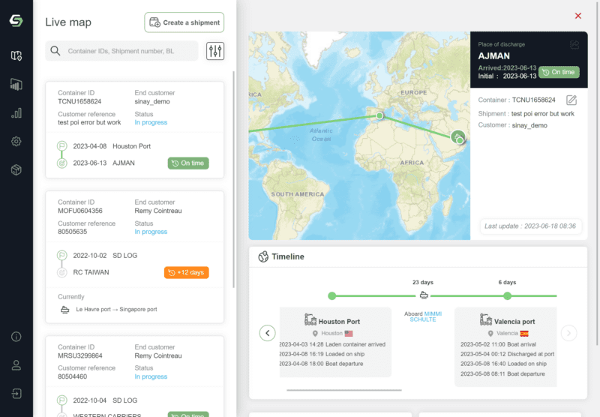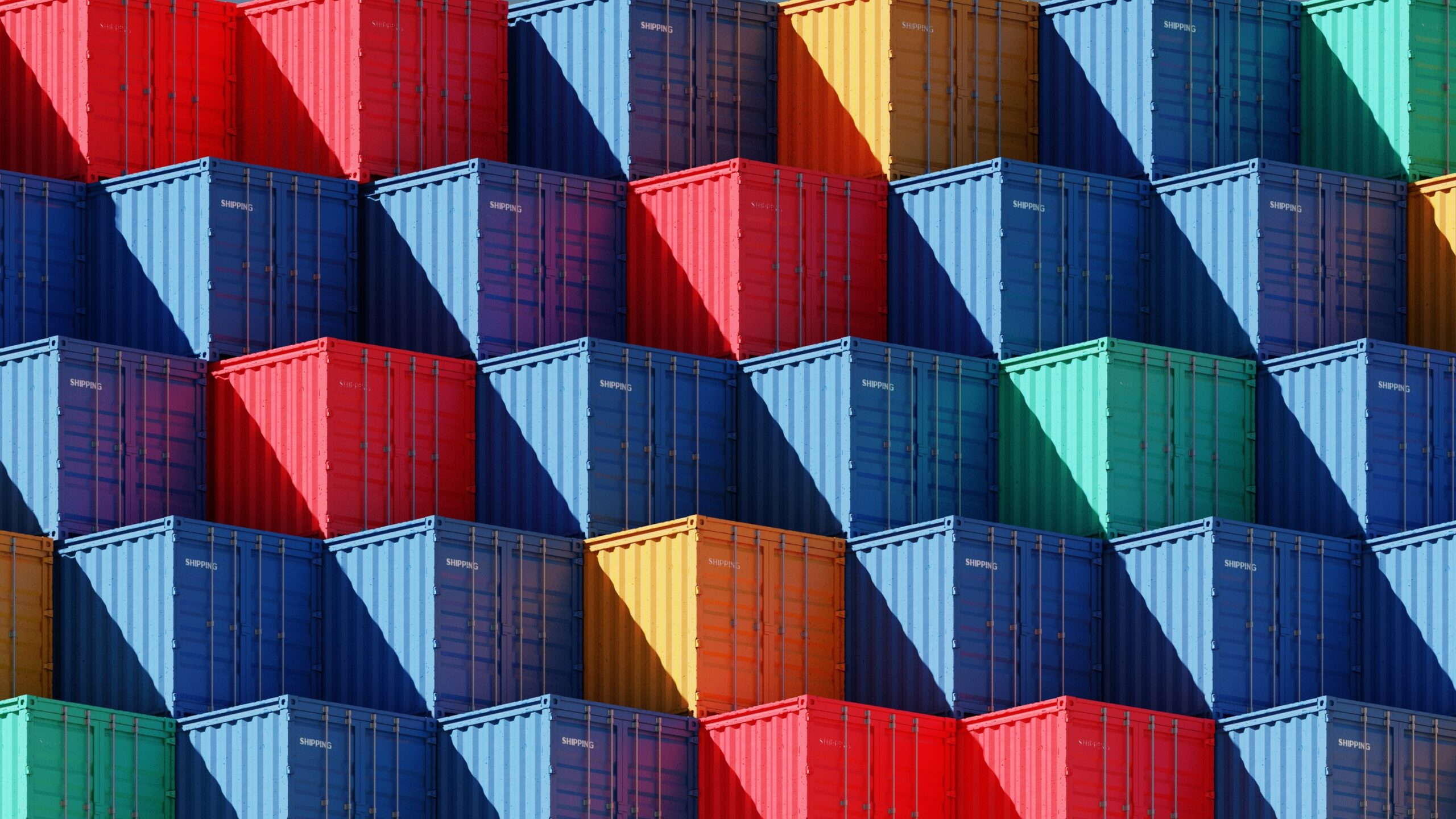
For companies involved in international shipping, efficient and timely movement of goods is crucial to remain competitive. However, detention and demurrage costs can significantly impact their supply chain operations and financial performance. These fees are charged when containers exceed their allotted free time at ports or under the customer’s custody, awaiting to be returned to the container yard. Fortunately, automated container tracking, using APIs , solutions which offer real-time visibility and data-driven insights into the movement and location of shipping containers, helps tackle this issue.
- The true cost of container shipping
Shipping lines have to provide empty containers to shippers or merchants for their shipments. The production or leasing of these containers incurs a cost, which is included in the freight rate. To meet the growing demand for sea transportation and optimize costs, shipping lines strive to ensure swift container turnaround.
To incentivize customers to promptly move and return containers, shipping lines impose demurrage and detention (D&D) charges when the free time period, during which no charges are billed, is exceeded. Demurrage charges occur when the consignee fails to collect the container from the port terminal or the shipping company’s yard within the allotted free time. On the other hand, detention fees are imposed when the importer exceeds the agreed-upon number of free days for containers use outside of the terminal or depot.
Shipping lines have the freedom to set their demurrage and detention tariffs on a per-day basis. However, they are obligated to adhere to certain limitations and provide a reasonable contractual free period, allowing the consignee to complete formalities, pick up the container, unload cargo at their premises, and return the empty container.
In each country, the practices concerning container detention and demurrage are overseen by maritime regulatory bodies, such as the Federal Maritime Commission (FMC) in the United States. This is to prevent any abuse and ensure that D&D charges serve their intended purpose, rather than solely maximizing the shipping lines’ profits.
Demurrage and detention costs vary by ports and carriers
According to Container Xchange’s extensive report on demurrage and detention charge trends in 2022, the five most costly ports are all situated in the US. In New York, Long Beach and Los Angeles, Oakland, and Savannah, these fees range from $2,210 to $3,182 after 14 days free time for standard containers. This is primarily attributed to the United States being China’s largest trading partner, which resulted in a severe port congestion during the pandemic. As a result, demurrage and detention charges have arisen as a direct outcome of the significant accumulation of containers, both within and outside American ports. Special cargoes in reefer, open top, out of gauge or flat rack containers, as well as dangerous goods, are typically the containers that experience the highest demurrage and detention charges. Typically, the free time period is shorter, and demurrage fees start accruing after 3 days, and the daily rate per container progressively increases from days 4 to 8, days 9 to 13, and beyond 14 days. For dry containers, which are commonly used for general cargo, the first 5 days are usually free. From days 6 to 10, the daily rate per container is generally lower, but it increases from days 11 to 15 and reaches its maximum from day 16 onwards.
Making an informed decision when selecting a carrier can significantly influence the demurrage and detention fees incurred. In fact, certain shipping lines, including Yangming, Maersk, or CMA CGM, impose higher rates that can result in substantial additional expenses amounting to thousands of dollars. The cost differentials between the top 5 ports are substantial, with each of them being over 2-3 times costlier than Hong Kong (which ranks 7th), or Bremerhaven and Hamburg in Europe (ranking 9th and 10th). Moreover, these ports are at least 20 times more expensive than major Asian container hubs, such as Dalian in China and Busan in Korea.
The FMC reported that, between April 2020 and December 2022, the nine largest ocean carriers (CMA CGM, COSCO, Evergreen, Hapag-Lloyd, Hyundai Merchant Marine, Maersk, Mediterranean Shipping Company, ONE, and Yang Ming) accumulated approximately $11.7 billion in charges for detention and demurrage.
Based on carriers, terminals, and contractual arrangements, demurrage charges typically range from $75 to $300 per container per day.
- Advantages of container tracking and automation
Among all the best practices promoted to reduce unnecessary delays that may lead to detention and demurrage fees, automated container tracking has become unavoidable. Such innovative solutions help cargo owners to optimize multimodal route planning and reduce turnaround time.
Enhance multimodal route planning and minimize idle time
Container tracking provides real time and predictive visibility on container movement and status. Having accurate and up-to-date information on the container’s location and estimated arrival time allows for thorough import operation preparation, minimizing any time wasted upon vessel arrival: customs clearance, cargo release from shipping line, container pick-up from port terminal, local transportation to warehouse and discharge.
Having real-time visibility into the location and status of each box enables multimodal route planning optimization. Consignees can allocate all required resources such as trucks, ships, and railcars. This contributes to reducing empty or underutilized trips, maximizing capacity utilization, minimizing transit times and avoid congested or inefficient routes. Faster container delivery and shorter turnaround times contribute to higher customer satisfaction, but also to decrease transportation costs, which are all key aspects.
Furthermore, tracking containers throughout their journey allows early detection and proactive issue resolution. In case any potential delay, damage or route deviation is identified, importers can make informed decisions in order to avoid supply chain disruptions. They can communicate with relevant stakeholders, reroute containers or make any alternative arrangements. On a larger scale, all parties involved, including shipping lines, freight forwarders, port operators, and customs officials, can coordinate their activities more efficiently.
APIs and Track & Trace solutions allow efficient container tracking
Manual data collection from the loading point to the unloading destination is a time-consuming process. Thankfully, this task can be automated through dedicated monitoring software, which can generate automated alerts and notifications based on predefined events or triggers (ETAs, delays, rollovers…) For example, if a container deviates from its planned route or experiences a delay, relevant stakeholders are immediately informed, and can make necessary adjustments promptly.
Ongoing container tracking may be combined with historical data regarding container movement, transit times, and performance metrics. By analyzing this data, shippers and consignees gain valuable insights into the performance of different routes, ocean or inland carriers, and transportation modes. This information allows them to identify bottlenecks, or any issues that may impact the turnaround time.
- Best tools and applications to track container activity
Many tools exist on the market to track and monitor container movement and activity. Depending on company size as well as shipment volume, choosing the best suited solution can be a difficult task.
Using Container Tracking APIs provides many advantages: thanks to the flexibility of APIs, only the most relevant data can be retrieved and integrated. You can gain visibility on specific shipments, create alerts based on container status, late or early arrivals, etc.
Rest APIs are specially designed to be integrated seamlessly into any system, regardless of the infrastructure.

How to choose the best API for container tracking?
Deciding on which API to choose for ocean freight activity monitoring can be a difficult choice based on the various solutions available on the market.
The first step to assess a solution is to study the nature of the information delivered by the API as well as the quality of the delivered data. For instance, making sure that the API can provide tracking for different container types, allows alert configuration, ETA data both real-time and predictive, container status, etc.
Container Tracking APIs such as the one distributed by Sinay also offer a comprehensive pricing plan that allows to trial the service for free completely autonomously before moving on to a paid plan based on volume of shipments.
Considering the quality of the documentation as well as customer support is also key.
Online Container Tracking Platforms
Other tools such as online platforms do not require any technical integration or configuration and will let you get started simply by creating an account.
While online platforms are accessible to all, they are also trusted by industry giants to manage ocean freight expeditions overseas. For example, the Safecube platform has been trusted by leaders to track container shipments from door to door and optimize turnaround time.

The Safecube platform provides features such as the creation of a watch list for any shipment or container and provides data such as status, movement, ETA and much more. The platform can even be connected to IoT devices attached to the container to provide additional data such as container opening, closing, temperature.
By adopting an efficient container tracking tools, using APIs or IoT solutions and leveraging real-time data, ocean freight managers can take proactive measures and streamline their shipping processes. This innovative approach helps to reduce demurrage detention and improve overall maritime supply chain efficiency.
